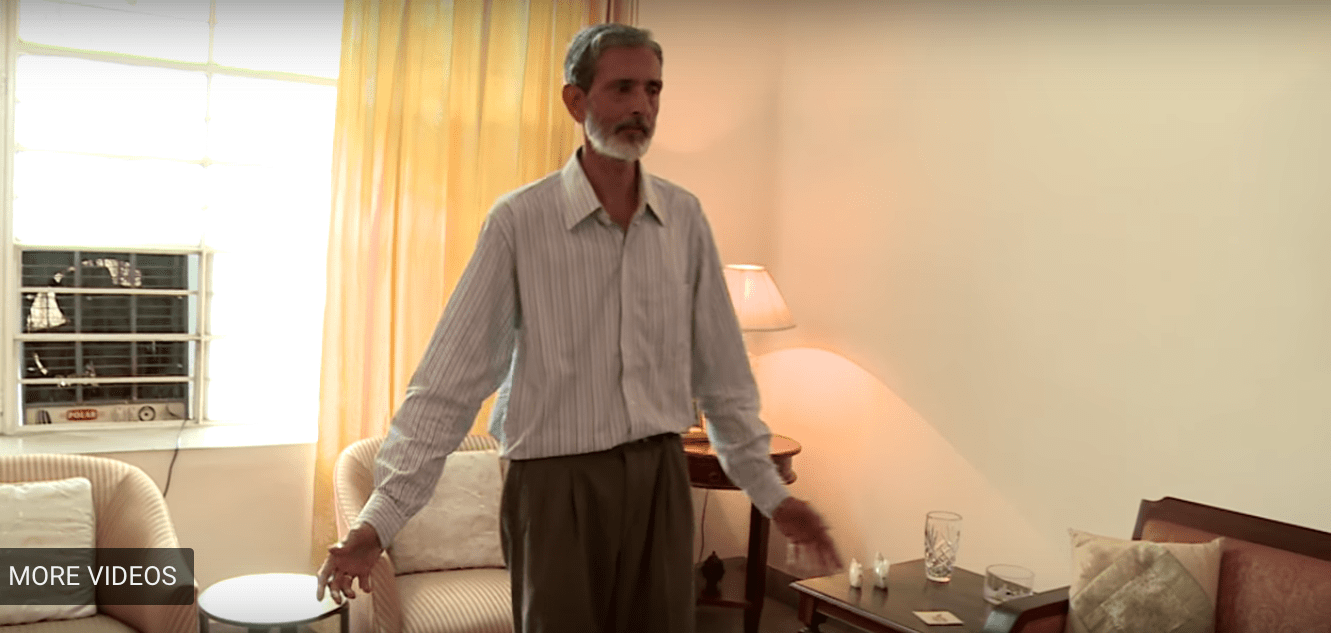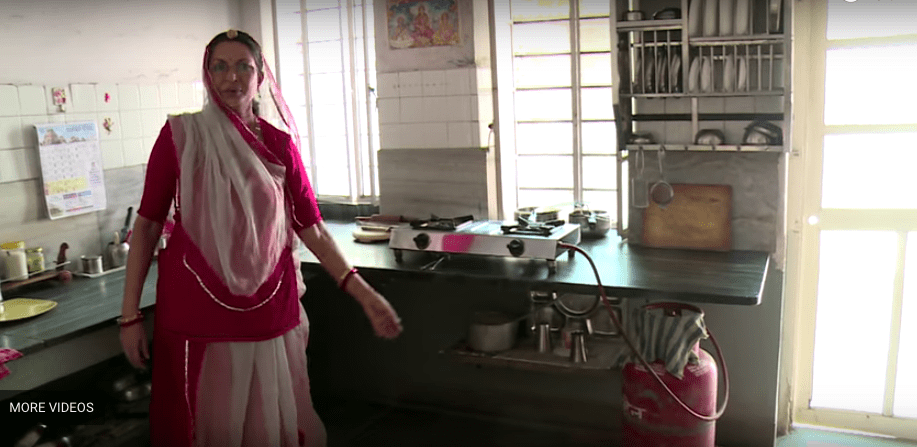Lesson plan developed for http://hindistartalk.lrc.columbia.edu/ by Rosanne Zeppieri and Rajni Bhargava; language notes by Rakesh Ranjan, audio by Aashna Dangaich
Hindi Module: Rathore Family – Our Home
Age Range of Learners: 10-16 grades
Targeted Performance Level: Intermediate Low/Mid
Number of Minutes: 90 minutes
Objectives: Students will be able to:
- Identify and describe rooms of a house in India and in the United States.
- Ask and answer questions about houses.
- State preferences and give specific reason for my likes and dislikes.
- Describe with some detail places and things found in a home.
- Talk about activities that people typically do in different areas of a house.
- Compare a home in the United States with one in India identifying commonalities and differences.
Language:
Location of home:
- shahar (m) – city
- gaaNv (m) – village
- ilaakaa (m) – area
- paRos (m)/ muhallaa (m) – neighborhood
- saRak (f) /maarg (m) – street
- chauraahaa (m) – crossing/cross roads
Listen:
Type of home:
- flaaT (m) – flat/apartment
- baNglaa (m) – family home
- hawelii (f) – small palace
- mahal (m)-palace
Listen:
Names of the rooms in a house:
- sone kaa kamraa (m) – bed room
- paRhne kaa kamraa (m) – study room
- baiThak (m) – living room,]
- rasoii ghar (m) – kitchen
- khaane kaa kamraa – dinning hall
- gusalkhaanaa/baathruum (m) – bathroom
- baagh (m) – garden
- aaNgan (m) – inner courtyard
Listen:
Types of furniture in different rooms of a house:
- palang (m) – bed frame
- bistar/bichhaawan – bed
- chhat (f) – roof
- farsh (m) – floor
- mez (f) – table
- kursii (f) – chair
- sofaa (m) – sofa
- kaaliin (m) – carpet
- almaarii (f) – cup broad
Listen:
Postpositions of location:
- … par – on, at …
- … meN – in… …
- … ke uupar – on, above, at the top of
- … ke niiche – under, beneath, below
- … ke pahale – before
- … ke baad – after
- … ke saamne – in front of
- … ke aage – ahead of
- … ke paas – near
- … ke saath – with, along with
Listen:
Adjectival expressions:
- baRaa – big
- choTaa – small
- aadhunik – modern
- paaramparik – traditional
Listen:
Verbs that describe activities commonly carried out in different areas of a house (cooking, eating, sleeping, socializing, watching TV, doing homework, relaxing, etc.):
- khaanaa banaanaa – to cook
- khaanaa – to eat
- sonaa – to sleep
- milnaa-julnaa – to socialize
- TV dekhnaa – to watch TV
- ghar kaa kaam karnaa – to do homework
- aaraam karnaa – to relax
Listen:
Adjectives: comparative and superlative; expressions of comparison:
- … se + adjective = adjective+er (or more) + than
- … sabse + adjective… = most +adjective
- … se baRaa/baRii – bigger than
- … se chhoTaa/chhotii – smaller than
- … sabse laMbaa/laMbii – tallest
- … sabse chhotaa/chhotii – smallest
Listen:
Performance Assessment:
Students are fascinated by Shahrukh Khan and his fabulous home “Mannat”. They search online for news about him and find a photo shoot of his home. They make note of the rooms of the house and his elaborate furnishing and then talk with classmates about this home, comparing it with their own houses in the United States. They decide to design a home where they will live when they earn fame and fortune. They post the plan and description of this house on the class Facebook (or Fakebook/Edmodo) page where classmates view and comment on the plans.
Learning Scenarios:
Lesson Plan A
Opening Activity: The teacher tells the class that he/she is selling his/her home. He/She shows the class a digital tour of the home. This may be done using a video clip, a slide-show, or with large visuals. As the teacher narrates the house tour, he/she specifically uses the targeted vocabulary repeatedly and notes important expressions on the board for students to use as reference.
Activity 2: The teacher distributes an 8×10 sheet of paper with small visuals of rooms of the house, some furniture items, pictures of typical activities carried out in different rooms of the house. Students “tear” the sheet into individual pictures. The teacher then leads the class in a series of tasks that allows students to internalize the new vocabulary:
- As the teacher names the rooms and furniture items, the students hold up the corresponding pictures.
- The teacher describes the different rooms and furniture items; students hold up the corresponding pictures.
- Students play picture Bingo with the vocabulary.
- Students work in pairs to create a story about an imaginary home using the pictures as prompts.
They tell their story to another pair of students who ask clarifying questions and make comments about the home. Time: 15 minutes For additional vocabulary practice, teachers present additional thematic vocabulary and implement a variety of games and activities as suggested at the following website:
http://iteslj.org/Techniques/Koprowski-RecylingVocabulary.html
Activity 3: Teacher plays the video clip, Module 2. Rathore Family- Our Home. Students listen and hold up corresponding vocabulary cards when they hear and/or see the name of the room or the furniture item. Students watch the video a second time and fill in a graphic organizer with information from the video:
1) names of the rooms of the Indian house;
2) furniture items they see or hear;
3) activities/chores carried out in the house
Activity 4: Students create an outline for a slide show or for a video tour of their own home. They include a script for the slide-show or video; they peer edit the work using a rubric or checklist to guide their comments.
Activity 5: They include a script for the slide-show or video; they peer edit the work using a rubric or checklist to guide their comments.
Activity 6: Using Photo Story, Power Point, Story Bird, or another presentational application, students create a tour of their home that includes photos and commentary. They complete their home tour for homework.
Lesson Plan B
Activity 1: Students meet with a partner to present the tour of their homes. The partners offer feedback toward improvement. Students spend time using that feedback to alter their presentations.
Activity 2: Half of the students display their homes around the classroom; the other students circulate, watch the presentations, ask questions, and make comments. Students switch roles to allow the rest of the students to present their homes.
Activity 3: Students work in pairs to view video clips of homes in India and they scan real estate ads (that the teacher has found) to gather information about the ways people live in different parts of India. They fill in a graphic organizer comparing their home with those in India and then write a short email to an epal in India, they Skype with a friend in India, or blog about the differences and similarities between the homes.
Performance Assessment:
Fascinated by the lifestyles of the rich and famous, students search online for news about celebrities and find photos shoots of their homes. They make note of the rooms of the house and the elaborate furnishing and then talk with classmates about this home, comparing it with their own houses in the United States. They decide to design a home where they will live when they earn fame and fortune. They post the plan and description of this house on the class Facebook (or Fakebook/Edmodo) page where classmates view and comment on the plans.
Materials:
- http://hindistartalk.lrc.columbia.edu/lesson/rathore-family-our-home/ ( Hindi Module)
- https://www.youtube.com/watch?v=p6F0z-7NHYc (video of Shahrukh’s house)
- https://www.youtube.com/watch?v=n_L-q4TTGrw (Photos of Shahrukh’s house)

